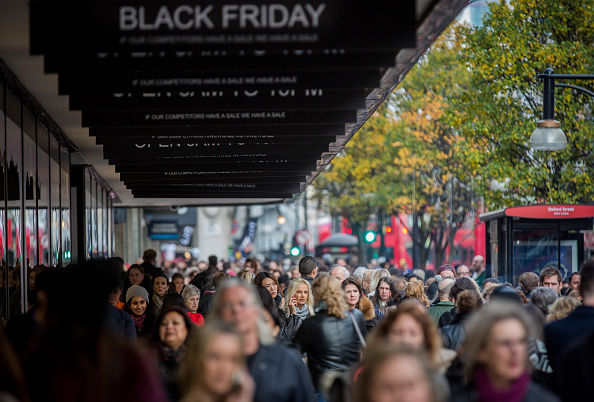A history of Black Friday: 148 years of catastrophe, sales and shopping

People walk past a shopfront on Oxford Street advertising Black Friday discounts on November 28, 2014 in London, England. Originating in the USA as a sales day that following the Thanksgiving holiday, ‘Black Friday’ is becoming an increasingly popular shopping day in the UK.
November 21, 2017
After eating lots of turkey and celebrating the holiday of Thanksgiving, people then venture out the next day for Black Friday shopping, a day of deals and steals in stores all around the country.
But what are origins of the unofficial shopping holiday? Read up on some of the history of Black Friday here:
1869- Gold spectators who tried, and failed, to corner the gold market resulted in a stock market collapse. The day was henceforth known as “Black Friday.”
1960s– The name “Black Friday” is used to refer to the start of the Christmas shopping season. It referred to the stores moving from “red” to the “black” on accounting records which were kept by hand. The red ink indicates a loss, and black indicates a profit.
2016- more than 154 million consumers shopped in stores and online for Black Friday, increasing the number of shoppers by 3 million since 2015. The number of Black Friday shoppers each year is expected to grow to 164 million total shoppers.
2016– more than 108 million people shopped online for Black Friday, which is about 5 million more than the year before, and 99 million people said they shopped in stores.
2016– about 36 percent of shoppers reported that all of their yearly purchases were on sale, according to the National Retail Federation, which could lend itself to deals happening before, during and after Black Friday.
Happy shopping!















